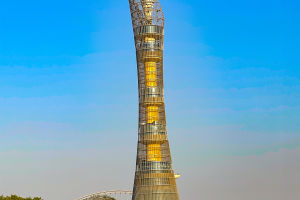In the annals of human architecture, cross-sea bridges stand as a testament to the heights of technology and engineering achievement.
They serve as vital links between land masses, traversing vast oceans and facilitating unprecedented levels of communication and trade.
However, constructing a bridge across the expanse of an ocean presents formidable challenges, particularly when confronted with deep and expansive waters. So, what precisely is the process for constructing such a monumental feat of engineering?
1. Planning and Design
The construction of a sea-crossing bridge commences with a meticulous phase of planning and design. Initially, the engineering team conducts an exhaustive geological survey to understand the intricacies of the seabed topography, geological formations, and marine ecological systems.
Based on the findings of these surveys, engineers craft optimal bridge structures and construction plans, meticulously factoring in variables such as seabed topography, marine climatic conditions, and shipping routes.
2. Infrastructure Construction
Before beginning actual construction, laying the infrastructure groundwork is imperative. This encompasses laying the groundwork on the seabed, including pier foundations, support structures, and other essential components.
In deep-sea environments, the challenges are magnified due to the complex terrain, profound water depths, and harsh working conditions.
Typically, specialized drilling rigs, submersible equipment, and cutting-edge technologies such as undersea tunnels are employed to navigate this phase of construction.
3. Bridge Structure
Building the primary bridge structure is one of the most challenging tasks in the process. Prefabricated bridge segments are often utilized, and transported to designated locations for assembly via offshore lifting equipment.
In deep-sea scenarios, specialized apparatus such as large floating cranes or suspended cranes are employed to ensure the seamless progression of construction.
4. Security Measures
Safety assumes paramount importance throughout the construction process. Particularly in the challenging environment of the deep sea, where working conditions are inherently hazardous, stringent safety protocols are imperative.
Consequently, the engineering team implements a comprehensive array of measures to safeguard the well-being of workers, including the provision of professional diving equipment and the bolstering of safety monitoring mechanisms at construction sites.
5. Environmental Preservation
The construction of a cross-sea bridge must not only focus on the project's execution but also prioritize the preservation of the marine environment. Recognizing the intricate and fragile nature of marine ecosystems, efforts are made to mitigate potential impacts arising from construction activities.
Measures such as limiting construction duration and employing environmentally sustainable materials are adopted to minimize adverse effects on marine ecology.
Conclusion
The construction of a cross-sea bridge represents a multidisciplinary endeavor, intertwining knowledge and expertise from realms such as geology, hydrology, and structural engineering.
Faced with the challenges of the deep sea, the undertaking becomes even more formidable. Yet, human ingenuity and technological prowess prevail, forging pathways that unite lands and foster human connectivity and collaboration.
Looking ahead, as scientific and technological advancements continue unabated, we envision the emergence of ever more magnificent cross-sea bridges, bearing witness to humanity's indomitable spirit in conquering new frontiers.


